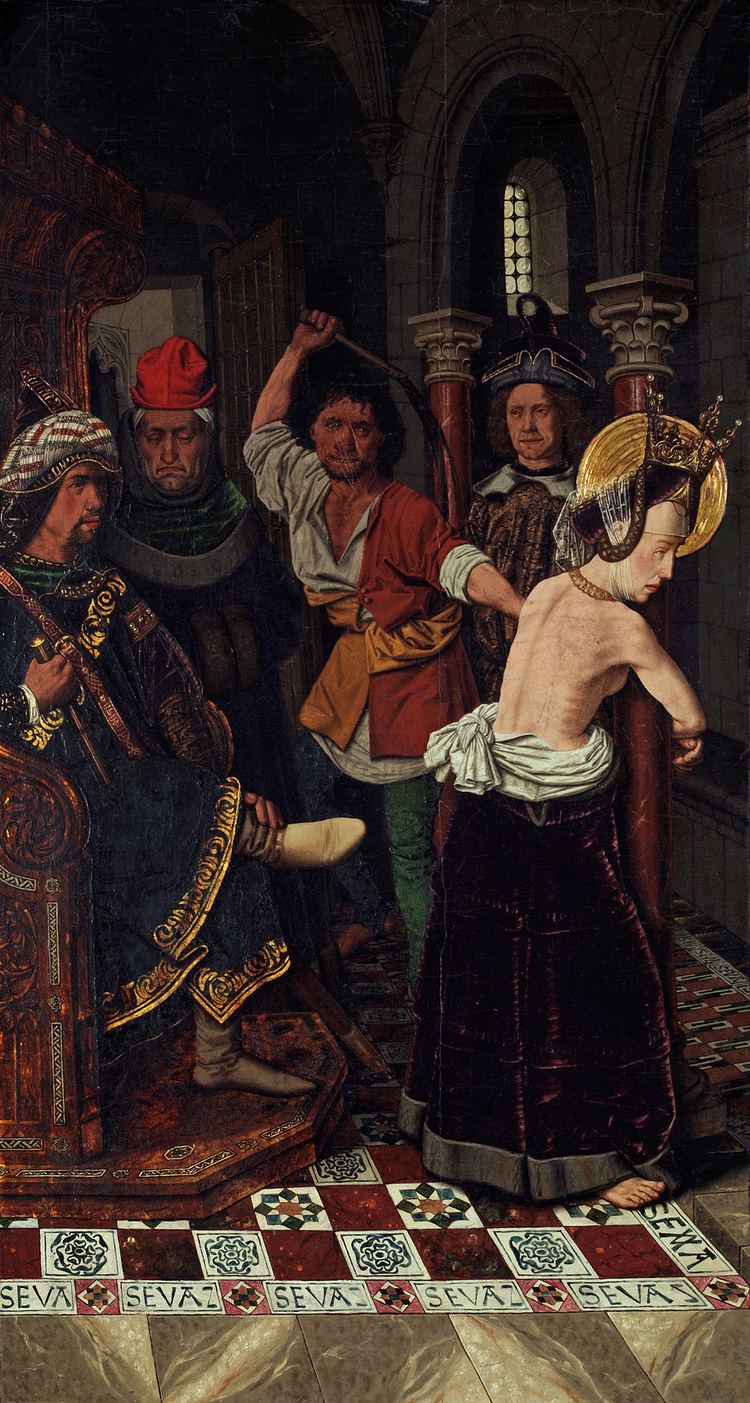Feast April 16 Role Martyr Name Engratia Engratia | Major shrine Zaragoza | |
 | ||
Attributes palm, depicted as a richly-dressed girl Similar People Braulio of Zaragoza, Oscar Carmona, Fernando Penalver, Dominguito del Val | ||
Apr 16 - Saint Engratia - Virgin - Martyr - 0303 - Spain
Saint Engratia (Portuguese: Santa Engrácia, Spanish: Santa Engracia) is venerated as a virgin martyr and saint. Tradition states that she was martyred with eighteen companions in 303 AD. She should not be confused with the 8th-century Spanish martyr of the same name.
Contents
Legend
Engratia was a native of Braga who had been promised in marriage to a nobleman of Roussillon. He sent as her escort to Gaul her uncle Lupercius (sometimes identified with the Luperculus who was a bishop of Eauze) and a suite of sixteen noblemen and a servant named Julie or Julia.
Upon reaching Zaragoza, they learned of the persecution of Christians there by the governor Dacian, who reigned in the time of the emperors Diocletian and Maximian. She attempted to dissuade him from his persecution, but was whipped and imprisoned when it was discovered that she was a Christian. She died of her wounds. Her companions were decapitated.
Martyrs of Zaragoza
Many others, called the Martyrs of Zaragoza, were martyred at the same time. Also called the Countless Martyrs of Zaragoza, their number includes, besides Engratia, Lupercius and Julia:
Veneration
Prudentius, a native of Zaragoza, wrote a hymn in honor of these martyrs, and lists their names, and describes the terrible tortures suffered by Encratis (Engratia). Engratia was certainly the most venerated of the group, and her cult was diffused throughout Spain and the Pyrenees.
During a synod held at Zaragoza in 592, the church dedicated to her there was reconsecrated, an act celebrated on November 3, which sometimes served as an alternate feast day.
The Church of Santa Engrácia in Lisbon is dedicated to her.
The Church of Santa Engracia de Zaragoza was built on the spot where Engratia and her companions were said to have been martyred. It was destroyed in the Spanish War of Independence, with only the crypt and the doorway being left. It was rebuilt in the late 19th or early 20th century, and served as a parish church.
